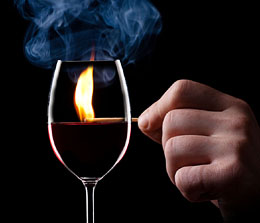 I recently made a Pinot Noir and all was great until just prior to bottling. I tasted throughout the fermenting process and was pleased with the taste, but a sulfur smell/taste developed just prior to bottling! What did I do wrong?
I recently made a Pinot Noir and all was great until just prior to bottling. I tasted throughout the fermenting process and was pleased with the taste, but a sulfur smell/taste developed just prior to bottling! What did I do wrong?
Name: Scott
State: California
—–
Hello Scott,
Sorry you are having such a problem with your wine. I know it can be upsetting when all seemed to be doing so well.
There are a several common issues that can cause your wine to have a sulfur taste and smell after it has fermented. Here are the 3 most common reasons that match up with your situation:
- Adding too much sulfite to the wine. This would either be in the form of potassium metabisulfite, sodium metabisulfite or Campden tablets. If normal sulfite dosages are used this is not likely to be the cause, but if too much sulfite is accidentally added, it could be why you are experiencing this taste and smell in your wine. You can use a Titrets and the Titrettor Hand Tool to determine how much free sulfur dioxide is in the wine, but this will not tell you how much bound sulfur dioxide is in the wine. The permanently bound sulfite can build up over the winemaking process if to many doses of sulfites are added to the wine, whereas the free sulfite can leave as a gas if given the opportunity. Here’s some more information free and bound sulfites in your wine. If you used no more than 3 or 4 sulfite doses throughout the winemaking process your wine will not be suffering from this. Most of the time, simply aging the wine will completely rid the wine of this fault, but in some extreme cases aging may not be enough. If you still experience a sulfur taste or smell upon decanting the wine, then pour the wine in a carafe and let is set for an hour or so before drinking. This will greatly help to reduce this wine fault.
- Putting the yeast under stress. If the fermentation did not completely ferment all the carbohydrates, it could be a situation where the fermentation started up again due a change in the wine’s environment. This would be something like: new oxygen exposure through racking; warmer liquid temperature —something that made the wine yeast want to come out of their dormant state and start fermenting again with less than optimal conditions. If the fermentation starts up again under stress then excessive amounts of hydrogen sulfide can be the result. There are other stressful situation the wine yeast could have been in during the original fermentation, but if that were the case, you would have noticed the sulfur taste and smell before now.
- Wine sat on the sediment to long. The sediment is made up mostly of yeast cells, both dead and dormant. If the sediment stays in the wine too long you can start to experience the effects of autolysis. This is where yeast cell start to consume other yeast cells — a cannibalization of sorts. In advanced cases of autolysis you will experience a sulfide odor and off-taste. This is somewhat related to number 2, above, in the sense that you can have a stressful reawakening of the wine yeast while it lays at the bottom as sediment. If both of these scenarios happen, you are much more likely to have a hydrogen sulfide issue.
If you feel that your wine has experienced either stress or autolysis, then the first step would be to rack the wine into another container in a splashing manner. This will give opportunity for the hydrogen sulfide to the leave the wine as a gas. You can also use a De-gassing/Mixing Paddle to help speed up the process.
If the effects still exist after racking or de-gassing the wine a couple of times, then you may want to rack the wine over some sanitized copper. The copper contact will cause the hydrogen sulfide to leave more readily.
Scott, I hope this information helps you out. Just realize that having a sulfur taste and smell in your wine is a fault from which your fermented homemade wine can recover.
Best Wishes,
Ed Kraus
———————————————————————————————————
Ed Kraus is a 3rd generation home brewer/winemaker and has been an owner of E. C. Kraus since 1999. He has been helping individuals make better wine and beer for over 25 years.

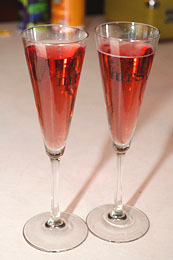 …I decided to try a sparkling wine and to make it sweet. The 5 gallon batch of strawberry from a concentrate was made to about 8-9% PA, and allowed to finish, then I added a syrup of 2-1/4 ounces/gallon and bottled it in the proper bottles. The sparkling part turned out very well, but the taste is anything but sweet. My question is how to make it sparkling and yet to preserve the sweetness? I’m not really equipped to do it the proper way with reopening the bottles and preserving and sweetening at that time. I followed an “easy way” recipe. Is this possible?
…I decided to try a sparkling wine and to make it sweet. The 5 gallon batch of strawberry from a concentrate was made to about 8-9% PA, and allowed to finish, then I added a syrup of 2-1/4 ounces/gallon and bottled it in the proper bottles. The sparkling part turned out very well, but the taste is anything but sweet. My question is how to make it sparkling and yet to preserve the sweetness? I’m not really equipped to do it the proper way with reopening the bottles and preserving and sweetening at that time. I followed an “easy way” recipe. Is this possible?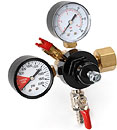
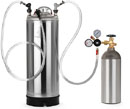
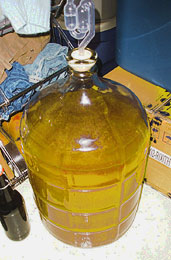 I am still new to winemaking, starting my second batch, my question is: I started my yeast in a separate bottle, started to ferment just fine, added it to my wine base, is not doing anything. I have warmed up my base, has now been @ 48 hours. Do I need to add more yeast? Am I loosing my base, now spoiled? Not sure what else to do to get yeast going.
I am still new to winemaking, starting my second batch, my question is: I started my yeast in a separate bottle, started to ferment just fine, added it to my wine base, is not doing anything. I have warmed up my base, has now been @ 48 hours. Do I need to add more yeast? Am I loosing my base, now spoiled? Not sure what else to do to get yeast going.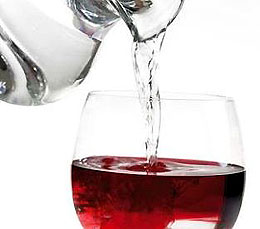 I purchased a winemaking kit that came with fresh juice from a local winery. The process was not explained well in the class, and it turns out I added water to the fresh juice in error (instructions did not differentiate between fresh and concentrated juice). The juice does contain 50% water, and has been in the refrigerator since (about 2 months). Is this juice still usable to make a batch of wine? If so, is it worth it since it is watered down? I don’t even know if adding water to the fresh juice is okay to produce an okay wine? Thanks for any and all help!
I purchased a winemaking kit that came with fresh juice from a local winery. The process was not explained well in the class, and it turns out I added water to the fresh juice in error (instructions did not differentiate between fresh and concentrated juice). The juice does contain 50% water, and has been in the refrigerator since (about 2 months). Is this juice still usable to make a batch of wine? If so, is it worth it since it is watered down? I don’t even know if adding water to the fresh juice is okay to produce an okay wine? Thanks for any and all help!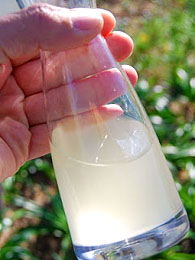 I typically make really high octane wine. I mean I like to make wines that are just short of whiskey. (Because not allowed to distill). But, when trying a new one I ran into a interesting problem. This particular one mostly water and sugar (trying for more of a vodka style) but it doesn’t seem to want to ferment at all. Never had one not ferment at all before. Go bad yes but not at all…. even tried a different yeast in case I killed the first one but still nothing?
I typically make really high octane wine. I mean I like to make wines that are just short of whiskey. (Because not allowed to distill). But, when trying a new one I ran into a interesting problem. This particular one mostly water and sugar (trying for more of a vodka style) but it doesn’t seem to want to ferment at all. Never had one not ferment at all before. Go bad yes but not at all…. even tried a different yeast in case I killed the first one but still nothing?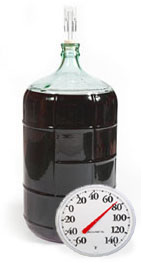 I started out wrong by air-locking my vessel from the start. I have two 5 gallon carboys; one containing Ruby Cabernet and the other French Colombard. The second mistake I made was to allow the juice to get too cold; below 40 degrees. I have since brought the juice home to a warmer atmosphere, where the French Colombard began to produce tiny bubbles, whereby popping at the air gap device; however, the Ruby is lying dormant. How should I proceed from here?
I started out wrong by air-locking my vessel from the start. I have two 5 gallon carboys; one containing Ruby Cabernet and the other French Colombard. The second mistake I made was to allow the juice to get too cold; below 40 degrees. I have since brought the juice home to a warmer atmosphere, where the French Colombard began to produce tiny bubbles, whereby popping at the air gap device; however, the Ruby is lying dormant. How should I proceed from here?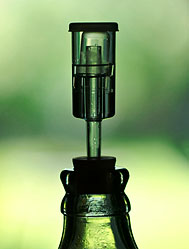 During the 2nd racking of the juice. I have had my Senior Air-Lock sometimes just stop working. What cause’s this? I use water in my Air-Lock’s.
During the 2nd racking of the juice. I have had my Senior Air-Lock sometimes just stop working. What cause’s this? I use water in my Air-Lock’s.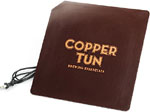
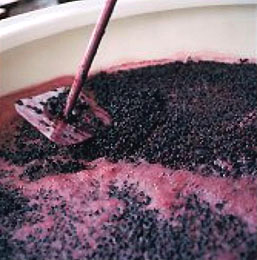 I just wanted to ask you if you think stirring or swirling a wine must when it starts to slow down before the first racking, because point zero hasn’t been reached yet, would that help or hurt anything as far as the wine is concerned, or should I just add more nutrient and not stir or swirl at all?
I just wanted to ask you if you think stirring or swirling a wine must when it starts to slow down before the first racking, because point zero hasn’t been reached yet, would that help or hurt anything as far as the wine is concerned, or should I just add more nutrient and not stir or swirl at all?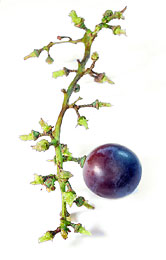 What happens when you add too much tannin? I’ve been making wine for about 5 yrs now and have had good results for each of the many fruit wines that I’ve made…I was always very careful to make sure measurements were accurate…this time making a pear wine, I made the mistake of picking up wine tannin powder and added 2 tbls…I was suppose to be adding pectic (which is what I thought I was holding)….when I realized what I had done, I was able to pull some of the tannin out, since I hadn’t mixed the must…though I’m sure I didn’t take enough of it back out…can this be fixed or do I need to trash this wine…
What happens when you add too much tannin? I’ve been making wine for about 5 yrs now and have had good results for each of the many fruit wines that I’ve made…I was always very careful to make sure measurements were accurate…this time making a pear wine, I made the mistake of picking up wine tannin powder and added 2 tbls…I was suppose to be adding pectic (which is what I thought I was holding)….when I realized what I had done, I was able to pull some of the tannin out, since I hadn’t mixed the must…though I’m sure I didn’t take enough of it back out…can this be fixed or do I need to trash this wine…